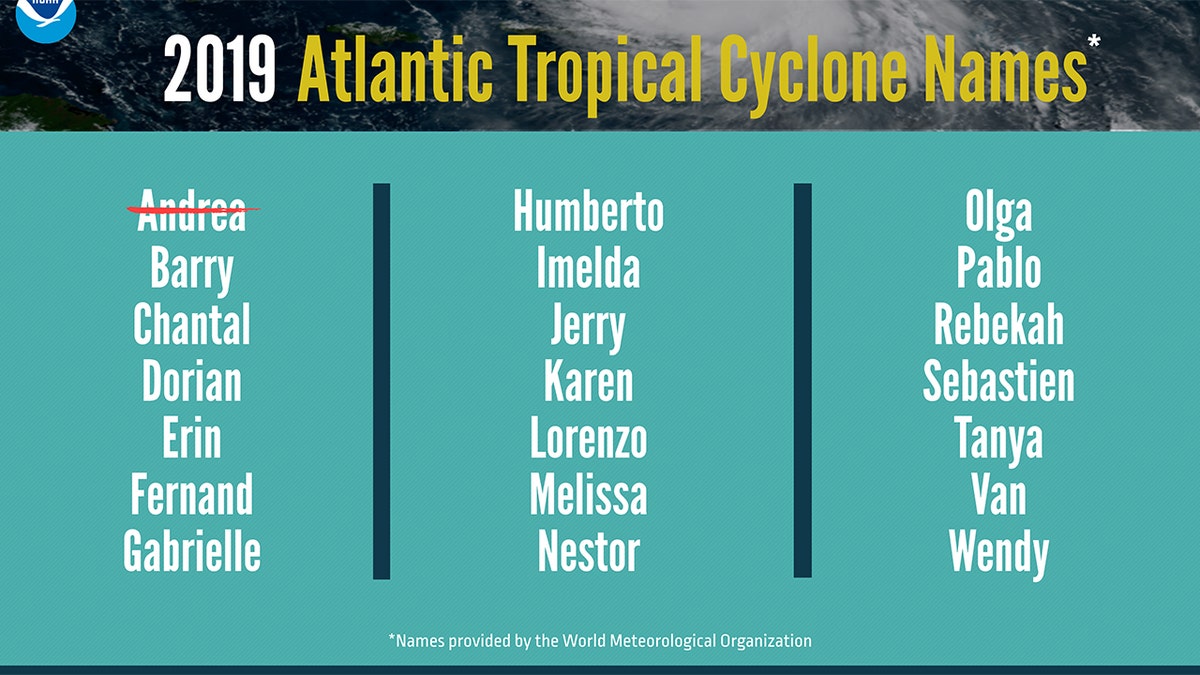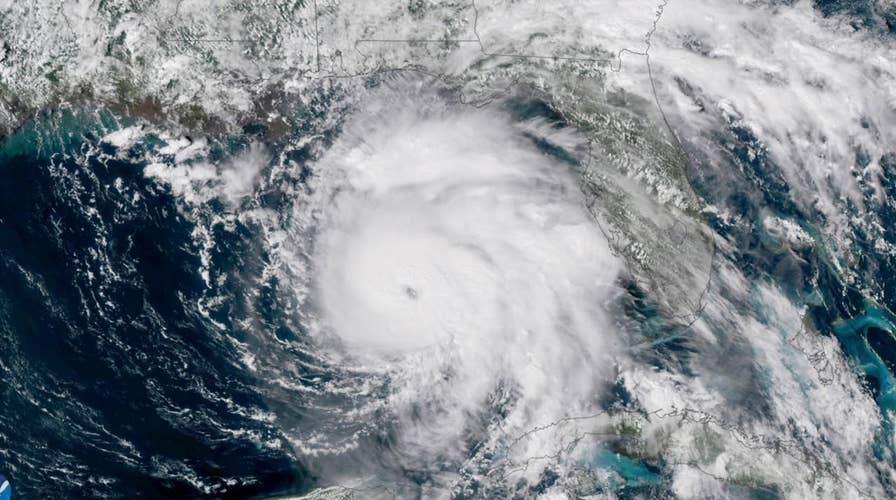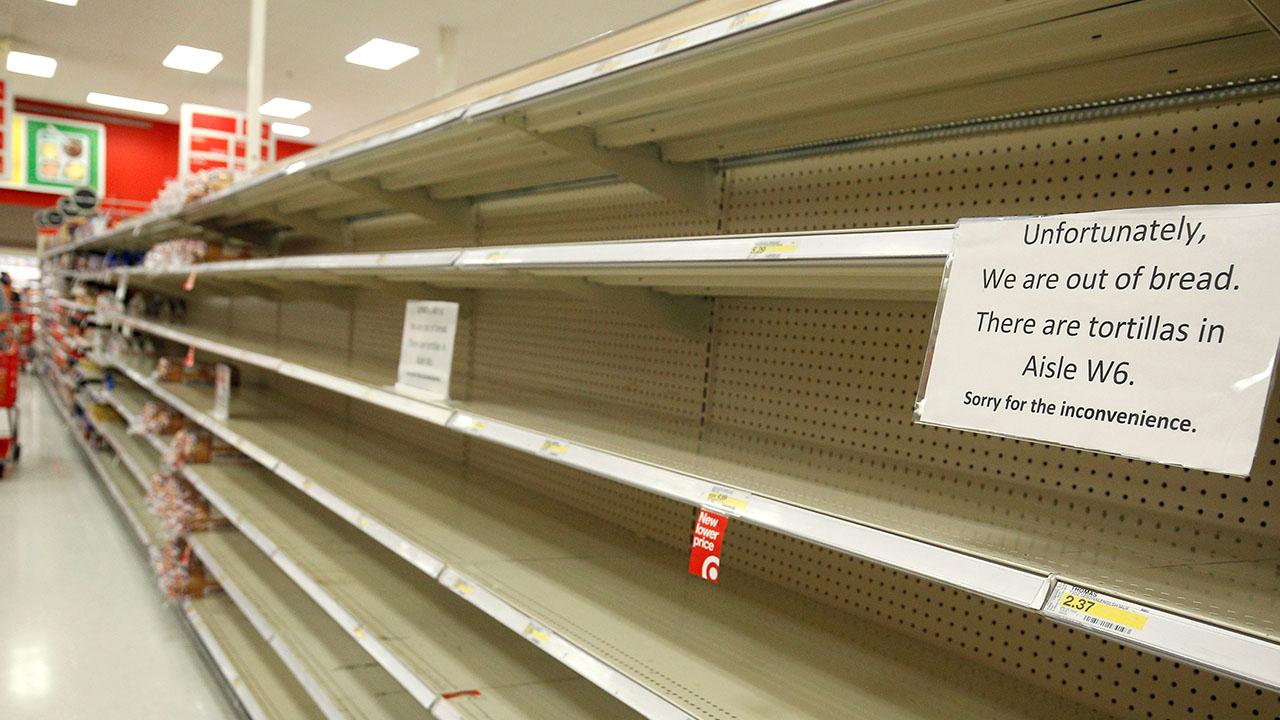2019 Atlantic Hurricane season expected to pack some punch
The United States may get hit by two to four major hurricanes before the end of the 2019 hurricane season. Forecasters are calling this year's season near normal.
The Atlantic hurricane season is expected to be close to "normal" this year but it only takes one storm to devastate a community, government forecasters said Thursday.
The National Oceanic and Atmospheric Administration said in its pre-season outlook that a near-normal Atlantic hurricane season is most likely this year.
"That's still a lot of activity," said Gerry Bell, the lead hurricane forecaster at NOAA's Climate Prediction Center.
SUBTROPICAL STORM ANDREA FORMS, THEN FIZZLES OUT DAYS BEFORE 2019 HURRICANE SEASON BEGINS
NOAA forecasters are calling for 9 to 15 named storms with winds of 39 mph or higher, of which 4 to 8 could strengthen into hurricanes. Of those storms, there will be 2 to 4 major hurricanes, which are classified as Category 3, 4, and 5 with winds of 111 mph or higher.

The 2019 Atlantic Hurricane Season outlook. (NOAA)
There already has been one named storm this season, when subtropical storm Andrea formed Monday and quickly fizzled a day later over the Atlantic, southwest of Bermuda.
An average hurricane season produces 12 named storms, of which 6 become hurricanes, including 3 major hurricanes, according to NOAA.
Forecasters this year predict a 40 percent chance of a near-normal season, a 30 percent chance of an above-normal season, and a 30 percent chance of a below-normal season for the upcoming hurricane season, which runs from June 1 to Nov. 30.
"So the key message is, we're expecting a near-normal season, but that's a lot of activity," Bell told reporters. "You need to start getting ready now."
MEXICO BEACH STILL IN RUINS AS NEXT HURRICANE SEASON LOOMS
This year's outlook is based on what forecasters described as "competing climate factors."
An ongoing El Nino is expected to persist and suppress the overall intensity of the hurricane season, according to the NOAA. At the same time, an expected combination of warmer-than-average sea-surface temperatures in the tropical Atlantic Ocean and the Caribbean Sea -- in addition to an enhanced west African monsoon -- favor increased hurricane activity.
Forecasters also stressed the NOAA outlook is for overall seasonal activity and not a landfall forecast. Those living in impact zones along the coast and inland are warned to be prepared for whatever may come this hurricane season.
“It only takes one event to devastate a community so now is the time to prepare," said Acting Deputy FEMA administrator Daniel Kaniewski. "Do you have cash on hand? Do you have adequate insurance, including flood insurance? Does your family have communication and evacuation plans?"
Kaniewski said that those living in risk areas should download the FEMA app to get alerts, in addition to heeding any warnings issued by local officials.
CLICK HERE FOR THE FOX NEWS APP
The upcoming hurricane season will be the first time that NOAA's fleet of Earth-observing satellites includes three operational next-generation satellites that provide "unique and valuable" data to help feed forecast models.
A planned updated to the National Weather Service's Global Forecast System weather model – often called the American model – will also take place early in the 2019 hurricane season.
"This marks the first major upgrade to the dynamical core of the model in almost 40 years and will improve tropical cyclone track and intensity forecasts," NOAA said.

The list of names for the 2019 Atlantic Hurricane Season. (NOAA)
The 2019 Atlantic Hurricane Season runs from June 1 to Nov. 30, and this year includes the names: Andrea, Barry, Chantal, Dorian, Erin, Fernand, Gabrielle, Humberto, Imelda, Jerry, Karen, Lorenzo, Melissa, Nestor, Olga, Pablo, Rebekah, Sebastien, Tanya, Van, and Wendy.
NOAA will update the 2019 Atlantic seasonal outlook in early August, just ahead of the peak of the season.



